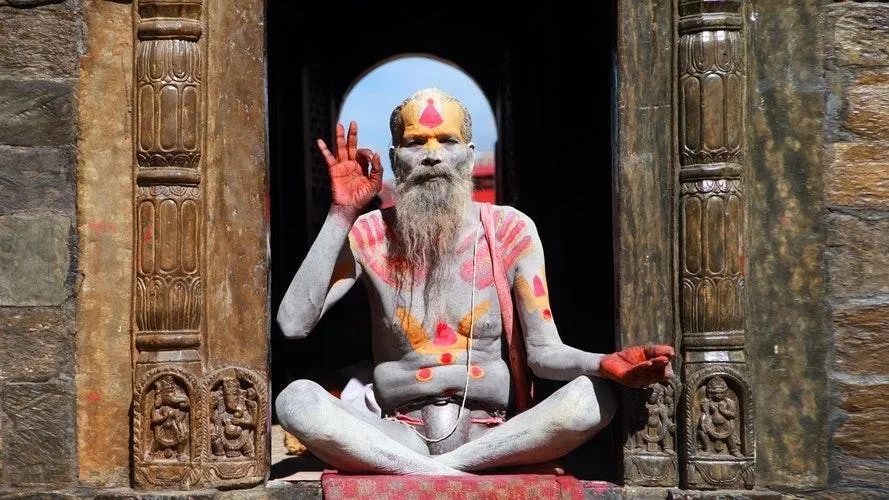I’m sure all of us have felt the powerful effects of music in our lives at some point or another. Even as a young child I remember my mother taking me to a concert where a ballad singer played guitar and sang. And just by his solo performance on one instrument, I was moved to tears. I couldn’t explain it, being still very young, but in hindsight I see that I was moved. The sound was moving. It shifted my emotional state of being and thus affected my consciousness in such a way that I was out of control of my own biological and mental state.
Now this is just one example of the mundane power of sound. Call it sentimental, but it shows the effect of sound on our state of consciousness. Similarly romantic, or conversely noisy rock music, can put us in a state of mind that matches the sound vibration. And people will pay anything to have the emotional experience they desire. That’s why pop stars are so rich and famous. The world is in the palm of your hand if you can move them with your sounds.

In the same way yogis and mystics have described the use of sound as a means to raise consciousness. All through my 10 years of training in the Gaudiya Vaishnava bhakti yoga ashram as a full time monk and renunciant, it was sound vibration which was the core central fundamental tool to raise consciousness, and it was applied daily by all members of the ashram. There are two types of sound meditation – one is softly reciting the mantra given by the teacher repeatedly on “japa” beads for a fixed period of time daily, and the other is loudly singing the same or other mantras to any various melodies, depending on the time of day, and accompanied by musical instruments.
Both of these techniques together made up the primary process of meditation in the cultivation of mindfulness of awakened consciousness. The first process was a solitary meditation, even though one may be in a room of other meditators. It was an internal state, performed by oneself, with the mantra being recited just loud enough so that you could hear yourself. He second process was a communal affair, where meditators all sit together in the room and play music together, while chanting together. There may be one lead singer who chants the mantra and leads the melody and the rest repeat in unison exactly what they just heard.
In both of these processes sound is the central ingredient. The specific sound in this case is an ancient Sanskrit mantra, comprised of what are considered to be invocations of divinity, a call to divinity to be present via that specific sound vibration. It is like calling the name of the divinity to invoke their presence within the consciousness. This may sound like a sentimental of speculative idea but it is an ancient practice using the Sanskrit language, which is considered the root language of the planet.
The Sanskrit language is so intricate that there are root syllables that are considered to be able to invoke a state of consciousness just by reciting them. Also there are certain syllables that are associated with each of the seven chakra points in the body, points that are correlated with the seven glands in the endocrine system. By reciting them one can activate that certain point in the physical body and thereby improve the state of the body and the associated mental state via that particular sound.
But beyond that is the maha-mantra or great mantra which is used to invoke the highest state of consciousness for anyone and everyone. It is universal because it is transcendent. It applies to all people for all time. That is what true awakened consciousness is all about. It is absolute, not relative. It is not changed according to a time, place or person involved. It is beyond the limitations of the mundane circumstances. All spiritual cultures throughout history have included a mantra, prayer or recitation of what they call the names of the divine, whether it be Buddha, Allah, Jehovah, Krishna or any other label given to the source.
The Sanskrit mantras are my favorite because they are the oldest and the original sounds and they come with the backing of volumes of philosophy and description as well as a lineage that goes back far further in time than any other. The first steps i awakening consciousness are the ones that enable us to walk out of the specific conditioning we were born into and allow us to accept truth from wherever it arises, if and when we resonate with it. To limit oneself to the culture of ones birth suggests that we are still trapped in the over-identification with body and nationality, with family and culture.
The first steps in consciousness awakening teach us that we are not the temporary body and actually are an eternal spirit soul, for want of a better term. We are consciousness residing in a particular body but the body is a temporary vehicle. To cling to the identification with body, genetics or nationality means we have not understood the first principle of consciousness or self-awareness. For example if you like a certain food dish, it may come from any part of the world but that won’t bother you if the taste is to your liking. Pizza is Italian but the whole world enjoys the dish. Curry is Indian but it has humorously become the most popular dish in England, surpassing fish and chips. Who would have thought? You get the idea.
So when sincerely seeking the process of awakened consciousness or self-realization, one will find few better than the Vedic culture as found in the ancient Sanskrit texts of what is today modern India. The Vedic culture of course pre-dates the modern political or geographical region known as India, but it has become associated with that country and was originally from that region of the Asian sub-continent. The may be numerous other cultures across the globe and across historic time that allude to techniques of consciousness awakening, and they generally concur with the Vedic conclusion, or will indeed have a lot in common, in a simpler format perhaps.
Now getting back to the actual technique of using sound vibration to uplift consciousness or generate the desired state of mind. The 5000 year old Sanskrit texts have obviously had time to practice and come to some valid conclusions, which is why they have stood the test of time. In the Hebrew tradition the name of the divinity is also considered sacred or holy or divine or in other words all-powerful, but for some reason those qualities make it taboo to the aspirant. It is considered too holy to enunciate or vibrate. Conversely all the other cultures use the same reasoning for the exact opposite conclusion – the sanctity of the sound vibration is its potency and that is the very reason why we should chant it or vibrate that sound – so that we can be uplifted in consciousness b associating with that sound.
Somewhere along the line sometimes the priests themselves can get in the way and misinterpret or try to control the power by keeping it from the people. But all the other well-known traditions agree that reciting your names of power is the secret to awakened consciousness, also described as communion with the divine by reciting the name of the divinity. That is where the power lies. If you have nothing else, no books of philosophy, no dos and donts, no recipe, method or teacher, if you have the magic spell, the words of power, and you recite them, you vibrate them, you will attain the goal of life, you will achieve perfection. It’s as simple and sublime as that.

